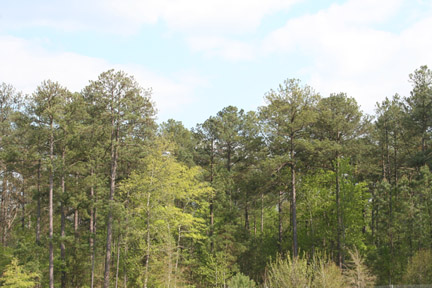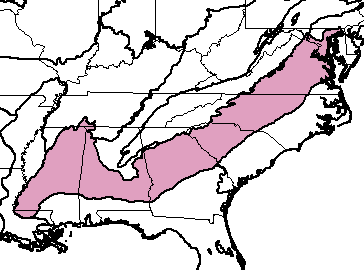
Sumter National Forest, South Carolina (c) 2008 Steven J. Baskauf
Bioimages home (click on an image to enlarge)
view
this page in its intended navigation context
Southeastern mixed forests
(WWF
ecoregion NA0413)

Sumter National Forest, South Carolina
(c) 2008 Steven J.
Baskauf

Source of bioregions data:
Olson, D. M. and
E. Dinerstein. The Global 200: Priority ecoregions for global conservation. (PDF
file) Annals of the Missouri Botanical Garden 89:125-126.
Distinctiveness (1=highest,4=lowest): 1 (globally
outstanding)
The freshwater ecosystems in this ecoregion are among the richest in the
temperate latitudes. The ecoregion is a center of gastropod diversity and
is rich in amphibian, reptile, bird and shrub species. It has a high
number of endemic reptiles, amphibians, butterflies, and mammals.*
Conservation Status (1=most endangered, 5=most
intact): 1 (critical)
99% of the habitat has been converted to agriculture or other uses.*
 Pinus palustris (longleaf pine)
(c) 2005 Lisa Kelly
Pinus palustris (longleaf pine)
(c) 2005 Lisa Kelly
 Pinus echinata
(shortleaf pine)
Pinus echinata
(shortleaf pine) Pinus taeda
(loblolly pine)
Pinus taeda
(loblolly pine) Cornus
species
Cornus
species Cercis canadensis
(redbud)
Cercis canadensis
(redbud) Juniperus
species
Juniperus
species Ilex opaca
(American holly)
Ilex opaca
(American holly)Some associated habitats









* Ricketts, T.H., E. Dinerstein, D.M. Olson, C.J. Loucks, et al. (1999) Terrestrial Ecoregions of North America: A Conservation Assessment. World Wildlife Fund - United States and Canada. Island Press, Washington, D.C. pp. 164-166.
Except as noted, images copyright 2002-2004 Steve Baskauf - Terms of use